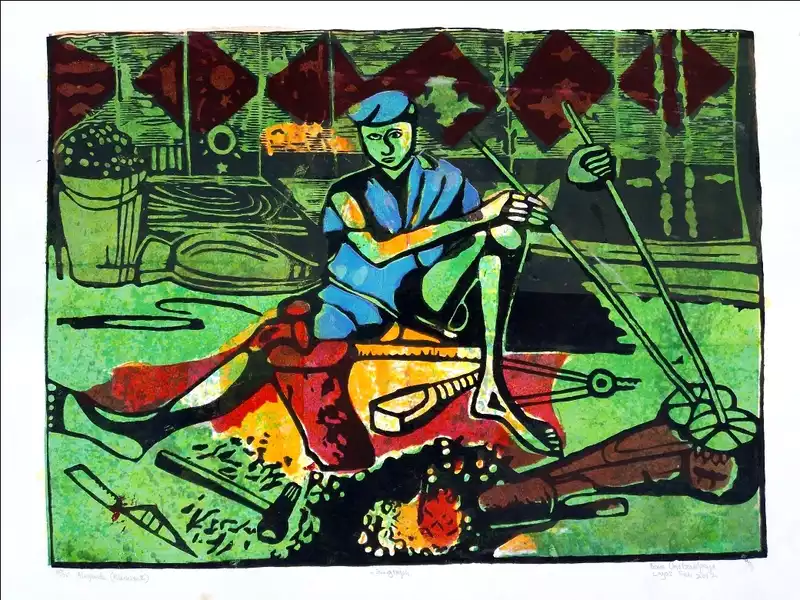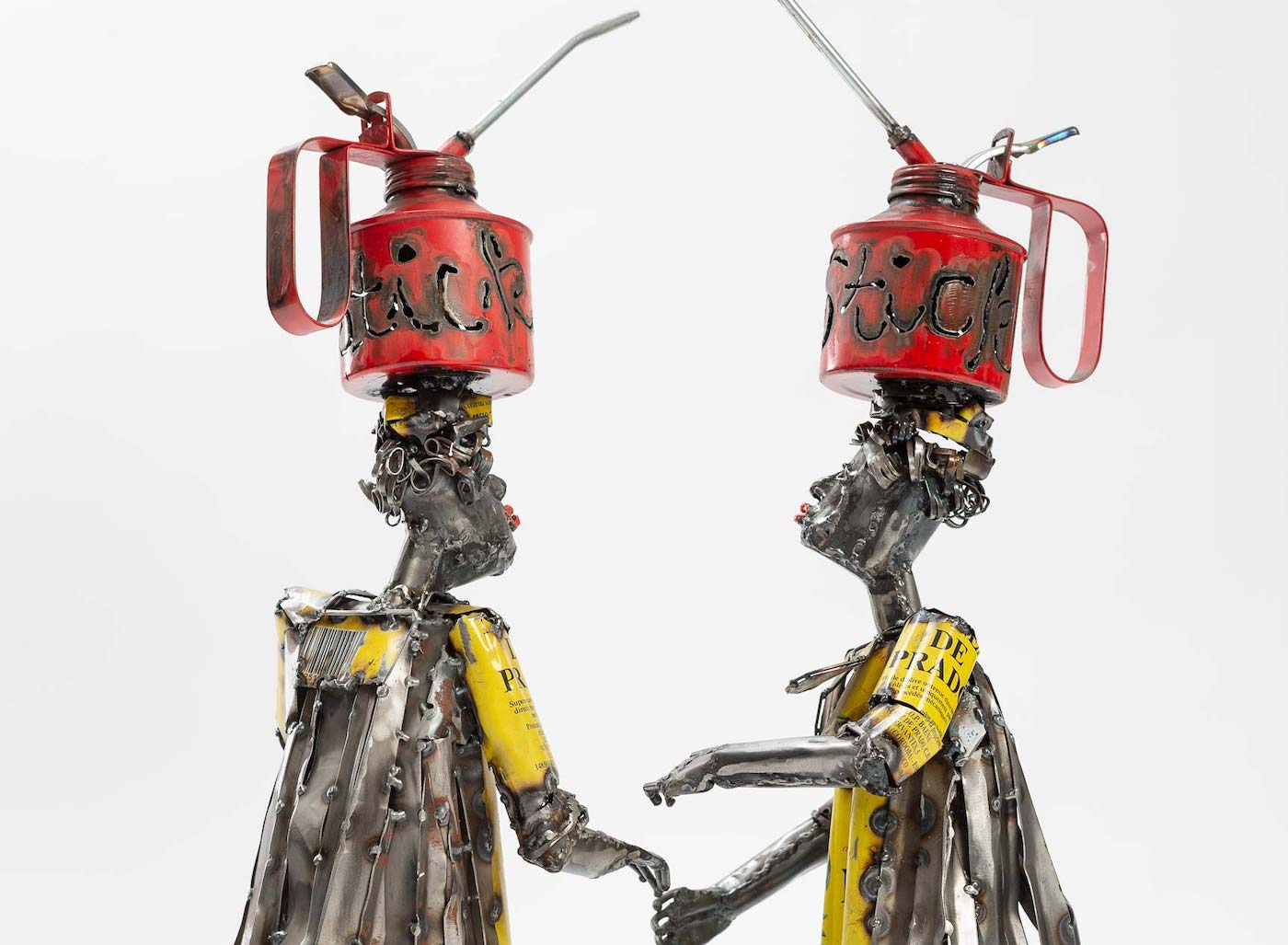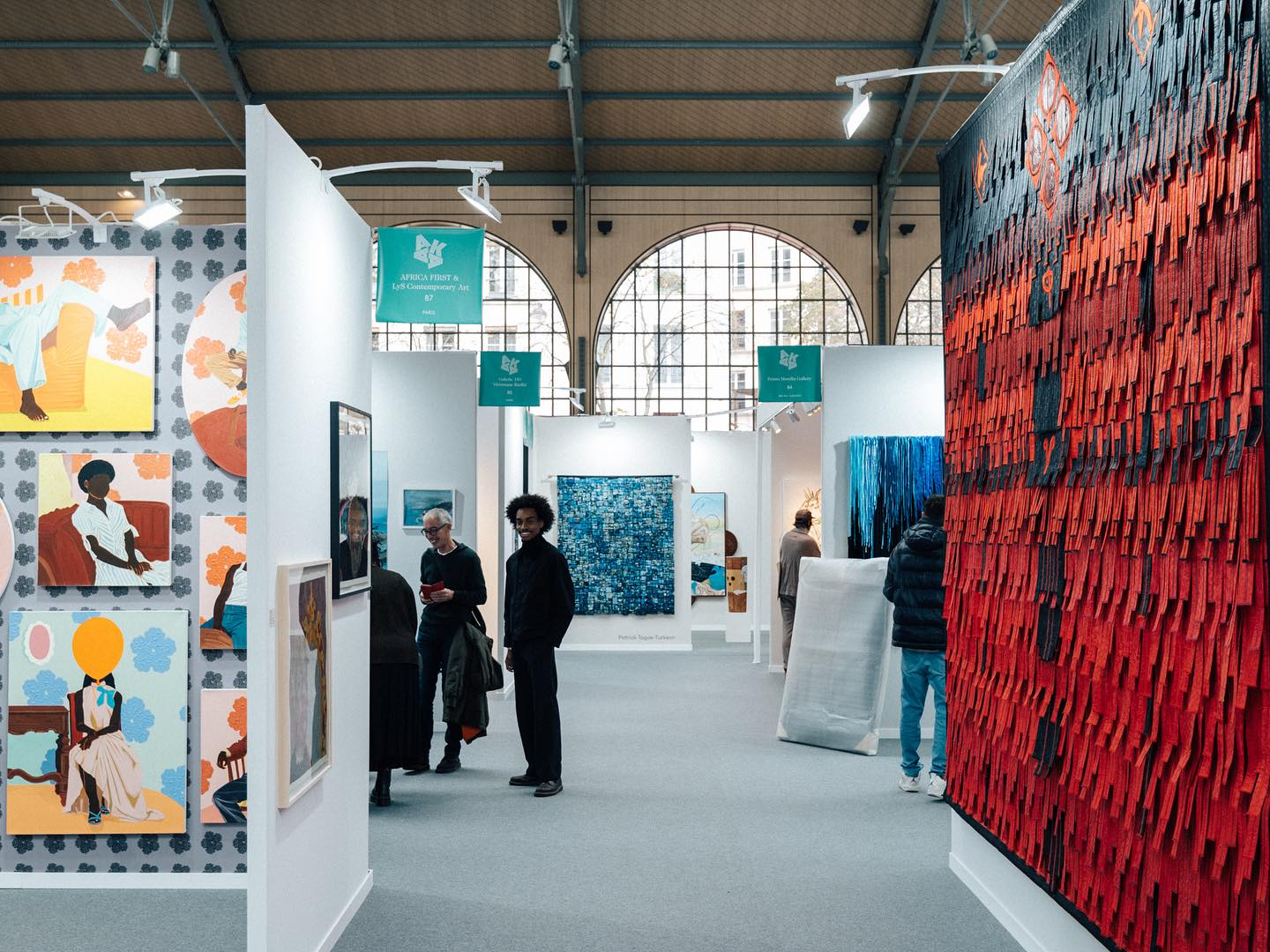In Nigeria, printmaking techniques have long been used, particularly in traditional artistic practices to achieve certain aesthetic goals. Blacksmithing, wood carving, ivory carving, calabash carving, Adire Eleko (starch resist dyeing techniques), and other ornamental arts share similarities to the printmaking processes of woodcut relief, intaglio, and serigraphic processes of printmaking.
Printmaking is an art form that employs a transfer technique to make multiples from an original image or template. Each image, or individual print, is called an impression, and multiple impressions are printed in an edition, with each print signed and numbered by the artist. Every printing media produces pictures that are inverted from the original. How the template (or matrix) is prepared determines the print outcome.
Printmaking has remained relevant over the years, and these artists, amongst others, have contributed to the contemporary Nigerian art scene using this technique.
Bruce Onobrakpeya
Born in 1932 in Agbarha-Otor, Nigeria, Bruce Onobrakpeya is a celebrated Nigerian painter and printmaker. Renowned for his innovative printmaking techniques, Onobrakpeya pioneered bronzed lino relief and metal foil deep etching to create bold patterns and colors to explore Nigerian folklore and contemporary life. His works focus not only on artistic philosophy, techniques and styles, but also on the parallel constituencies of Urhobo, Benin, Fulbe, Hausa, Igbo, Yoruba and other cultures in and out of Nigeria. He draws inspiration from different source materials, including the art of the Benin Kingdom, regional Nigerian landscape painting, Christian iconography, and the political turmoil of his home country, all of which is depicted in his art.
With a career that has spanned over six decades, Bruce Onobrakpeya has developed new printmaking techniques, experimented with existing modes of artmaking, and established himself as a pioneer in West African modern and contemporary art. As a student at the Nigerian College of Arts, Science and Technology, he co-founded the Zaria Art Society, a group dedicated to developing a style of postcolonial Nigerian art that embraced Pan-African folklore, motifs, and iconography. His works can be found in the collections of the Vatican Museum in Rome, the National Gallery in Nairobi, and the National Museum of African Arts, Smithsonian Institution in Washington, D.C., among others.
Adebisi Fabunmi
Adebisi Fabunmi was born in Takoradi, Ghana, in 1945. Living near his sister in Osogbo, he started as an actor in Duro Ladipo’s theater. In 1964, after participating in a workshop organized by Georgina Beier, he turned to visual art. Then he became known for his early collages, which were made of yarn, and later, his linocut prints and wool paintings.
Working across different media and styles, Fabunmi was widely known for his most innovative creations and subject matter, including themes related to traditional Yoruba life. Inspired by the work of the Huichol Indians of Mexico, Fabunmi experimented with yarn, developing his own technique of adhering the yarn to a backing of heavy muslin or plywood. As his work progressed, he used brighter colors.
Fabunmi was famous for his city prints, which he divides and subdivides his compositions, filling every inch of space with patterns. His prints are like jigsaw puzzles as each black-and-white design element cumulates into a maze of houses, windows, rivers, animals, clocks and trucks.
Solomon Irein Wangboje
Born in 1930, Nigerian modernist Solomon Irein Wangboje was one of the earliest graduates of the Zaria Art Department. As one of the first modern printmakers in Nigeria, his interest in printmaking was said to be more technical than conceptual. He was known for the rich colors and bold lines in his work. His silkscreens were said to display an extraordinary depth in spite of the medium’s two-dimensional limitations. He illustrated popular books on the Nigerian art folklore and myth using his woodcuts.
A native of Sabongida Ora in Edo State, Solomon Irein Wangboje was a key member of the Zaria Arts Society, alongside Uche Okeke, Demas Nwoko, Bruce Onobrakpeya and Yusuf Grillo. The Zaria Arts Society made significant contributions to the history of contemporary Nigerian art.
Rufus Ogundele
Rufus Ogundele (1946–1996) was born in Oshogbo. Ogundele became a musician and an actor in his uncle, Duro Ladipo’s theater company when he was a teenager. In 1963 he participated in Denis Williams’ painting workshop and thus began his prolific career as a visual artist. He began to develop his skills as a printmaker when Georgina Beier invited him to work in her house. There he learned the technique of linocut.
Ogundele combined the European artistic techniques he developed under Williams’ and especially Beier’s tutelage with the teachings of traditional Yoruba culture. His subject matter attests to his strong beliefs, which are rooted in Yoruba culture and life. Although raised as a Christian in the Anglican Christ Mission Society, he is a follower of the Yoruba god of iron Ogun. His family name—Ogundele—means Ogun worshipper. The dominant presence of color in Ogundele’s work appears to underscore the power of Ogun as a factor in the artist’s life. The strong black outlines that Beier introduced him to are reminiscent of elements found in the German expressionist work of Nolde and Kirchner.
Yinka Adeyemi
Born in 1945, Yinka Adeyemi is a postwar and contemporary artist from Osogbo. He was known for his work, which includes batik on cloth and rice paper, bead mosaic art, paintings, tapestry, and mono and lino printing. Adeyemi distinctively used bold black forms which he later colored with a color resist technique as inspired by Yoruba adire fabric. His work created stories that record past and present folklore, customs, and beliefs of his homeland – Nigeria. He was one of the well-known artists of the distinguished Osogbo Art Movement of the Yoruba of western Nigeria under the teachings of Susanne Wenger in the 1960s.
Iyanuoluwa Adenle is a Nigerian art writer, essayist, and poet based in Lagos. She is currently the head writer at Omenai. Adenle has contributed to a number of art publications, including Tender Photo, Art News Africa, Pavillon 54, and Omenai.





